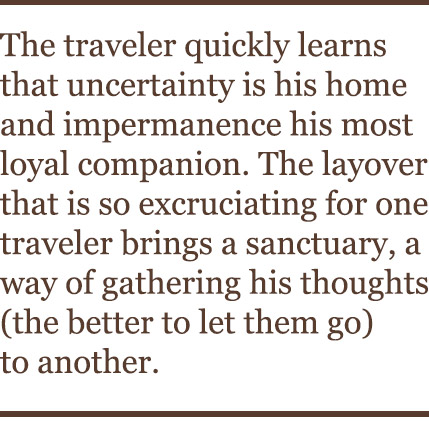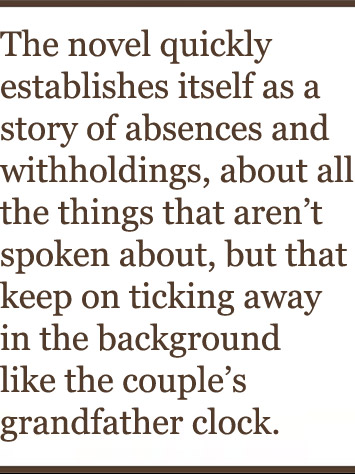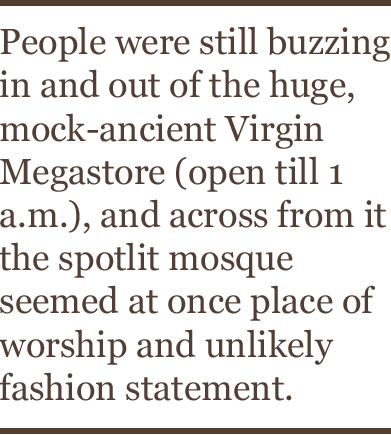(The following is an introduction to a new edition of Siddhartha, by Hermann Hesse, published to mark the 50th anniversary of the author’s death and the 90th anniversary of the book’s first appearance, by Peter Owen, in August 2012).
“I can think, I can wait, I can fast.” As an innocent fifteen year-old, incarcerated in a 15th century boarding-school in suburban Berkshire, I scribbled down those words upon my first encounter with Siddhartha and felt transformed. How could wisdom be at once so simply phrased, I thought, and yet so radical—so much deeper than everything I heard from my teachers or my parents? After many years of chapel, I was trained to tune out any word that began with a capital letter, and I didn’t have a clue what Hesse was going on about with all his talk of “Brahmins” and “the Illustrious One.” But something in the clarity and directness of Siddhartha’s arrowed proclamation stirred me, spoke to a secret restlessness—and I didn’t read closely enough to see that even that bold assertion will be undercut, as so many of Siddhartha’a illuminations are, before the novel is over.
I’d already devoured Hesse’s Narziss and Goldmund, whose tale of a romantic adventurer and a monk seemed made for us boys in our medieval, monastic cells, longing for foreign places and girls. I’d guessed that it was acceptable to read Hesse, because he had been awarded the Nobel Prize for Literature, and so seemed as legitimate as the Thomas Mann or Jean-Paul Sartre with which we precocious boys were so eager to impress one another. I knew, too, that Hesse’s starting-point—that there must be something more to life than comfort and material possessions—had truth, since all of us were living in a luxurious sanctuary with its own secret gardens and rivers and Gutenberg Bible, and still we wanted to be out in the world, confounded.
What I didn’t know—couldn’t have accepted then—was that literally millions of others were thrilling to the same book across the world, in much the same way; to me—and this is part of Hesse’s strength–it seemed the story of me alone, someone whose ideas and destiny were apart from those of the normal world. As a boy, I could not make out the complexity of the book, its suppleness and ease with paradox, and was in no position to discover how, for Hesse (a patient of Jung’s while completing Siddhartha), his story was less about finding the light than about confronting the shadow, and looking past a high-minded boy’s ideas of being superior or apart. For a teenager, the novel touched the same hidden place as some of the simpler parables of D.H. Lawrence (The Virgin and the Gypsy, “The Man Who Died”), the questing ballads of Leonard Cohen, the novels we eagerly slipped one another under our desks, Le Grand Meaulnes and The Magus.
Those books that capture the world’s imagination, at least as cosmic, universal fairy-tales—from The Little Prince to The Alchemist—depend for their power on a disarming combination of parable and complexity; they can be read by any kid, in other words (“age 14 and up,” advises my edition of Siddhartha), but they’re best savoured by someone who’s known suffering and loss. They speak in several languages at once.. As a boy, I was too young to follow most of the implications of Hesse’s attack on “spiritual materialism,” as it’s called, the sense of ambition and pride and self that lies even in the wish to be free of self; I couldn’t see that his wisest line here might be that “The wisdom which a wise man tries to communicate always sounds foolish.” I simply responded to the vague outlines of the tale, its sense of yearning. When I go back to it now, it’s the refusal to accept any answers, Siddhartha’s final assertion that it’s seeking itself that obscures the truth, that impress me more with their unexpectedness. Inside the guise of a simple Eastern fable, Hesse is delivering an anguished German Bildungsroman about a young man who comes upon a new self-cancelling revelation every day and has finally to shed his cleverness, his pride and most of all his love of nothing but the quest.
When I was young, in short, I thrilled to the beginning of Siddhartha {itals}. Now, a lifetime later, I am more moved by the end, with its many separations, its renunciation of all exalted notions, its touching human accounting of friendship and of loss.
*****
It’s tempting, I know, to dismiss Siddhartha as one of those diversions one has to put away with childish things; it casts such a spell over so many of us in our formative years that we’re inclined to think of it in the same breath as the purple passages and sappy love-songs we loved when we were too young to know better. Going back to it now, I do indeed find much of the book even shakier and gauzier than I recall. But many other parts are far subtler, if only because the book is shaped according to an Eastern sense of time as cyclical instead of the more linear pattern I was brought up to honour. The more Siddhartha comes to appreciate the circular nature of life—when he becomes a father, in short, and not just a son—the more he comes to understand what may be the central idea in all Hesse’s writing, that the life of holiness and truth runs right through the centre of the world and all its confusions, squalour and humiliation. It’s Siddhartha’s mistakes in the book (as he tries to impose holiness on his young son, for example) that appeal to me more than Siddhartha’s discoveries.
The book’s relation to the Buddha story intensifies this complexity. If you’d asked me what Siddhartha {itals} was about before my most recent rereading, I’d have answered, airily, “Hermann Hesse’s retelling of the Buddha story.” I’d completely forgotten, in other words, that Siddhartha deliberately walks away from the Buddha–much though he respects that great contemporary’s teachings–and repeatedly scorns those who follow any doctrine (the scorn itself, of course, part of what Siddhartha has to work through). There are aspects of this that may sound like heresy to certain pious Buddhists; but after having lived in deeply Buddhist Japan for 25 years now, and talked and travelled with the Fourteenth Dalai Lama for 38, I can see that there’s also a Buddhist aptness to Hesse’s highly individualistic telling of the story. The Buddha himself, after all, always urged people not to blindly follow his word—not to become “Buddhists,” as it were—and not to rely on the testimony of others; each of us has to wake up (to use the central metaphor of the book) by ourselves, and see things as they are, beyond the reach of projection or “some imaginary vision of perfection.”
This may sound like the “pathless path” of Jiddu Krishnamurti, or even the “No Guru, No Method, No Teacher” chorus of Van Morrison; but in Hesse’s sometimes ironic telling, it also sounds wonderfully akin to that German traveller you’re likely to meet in Dharamsala tomorrow, who dogmatically rants about how he hates all dogmas and opinions.
Hesse was in his mid-forties when he published Siddhartha and, coming out in the same year as “The Waste Land” and Ulysses, it deliberately turned its back on the dailiness and sometimes self-annihilating learning of those modernist masterpieces, to face another direction, more timeless and less, you could say, Brahminical. The book may seem young to those of us anxious to outrun our youth, and parade our knowingness and maturity, but when Siddhartha says, “In every truth the opposite is equally true,” he’s delivering exactiy the sentence that the Nobel Prize-winning physicist Nils Bohr enunciated around about the same time. And when he says, “It also pleases me and seems right that what is of value and wisdom to one man seems nonsense to another,” he serves up a kind of modesty, a realism, that I can well appreciate at 55.
Perhaps that’s one reason the book outlasts fashion and speaks to so many, in every kind of circumstance. When I wanted to write this foreword, I headed to the nearest book-shop in a small town in California, where I happened to be staying, and there discovered—to my surprise—nine separate editions of Siddhartha vying for my attention; the one I bought was in its 87th reprinting
“I’m glad it still sells,” I told the ear-ringed man at the cash-register.
“Oh yes,” he said. “I sell these all the time. They read it in schools a lot; well, all kinds of people are picking it up.”
It doesn’t matter, I think, that Siddhartha himself is not a very individualised character—more, really, of a soul with an auspicious name, a shadow attached to a longing and walking through a compact lyric poem. It doesn’t matter that so many of us, when young, read the book in our own way, and take it to be exactly what it later doesn’t seem to be at all: a call to find and listen to your “bright and clear inward voice” and not, in fact, a reminder that knowledge “has no worse enemy than the man of knowledge.” It doesn’t even matter if this seeker’s scripture is associated more with dreadlocked kids tramping around the Himalayas than with the existential searchingness of Hesse’s Magister Ludi or Steppenwolf.
Precisely through its looseness, Siddhartha can encompass many more readings than one first supposes, and can become a touchstone that somehow keeps one company through life, growing older and more mature as the reader does. At seventeen, two years after my discovery of the book, I was asked to deliver a formal recitation in an imposing hall at school, furnished with busts of Pitt the Elder and Gladstone and other eminences who had walked the corridors before us; I chose, instead of the expected Xenophon or Seneca, some passages about the river in Siddhartha, to horrify the assembled worthies. When I was twenty-nine, and left the job of my dreams—writing on world affairs for Time magazine in a 25th-floor office four blocks from Times Square—to stay in a monastery in Kyoto, I knew I couldn’t liken myself to the Buddha, leaving his gilded palace at twenty-nine, but perhaps I had something of the unformed and often annoying Siddhartha in me.
When I met my (Japanese) future wife in Kyoto, a little later, one of the main things that we shared was a youthful appreciation for Herman Hesse’s books about seminaries and adventure. And as it happens, like many boys of Hindu origins, I was given at birth by my parents the first name of the Buddha, Siddharth, though they also gave me a shorter, Italian name that has served me well on my global journeys.
Travelling the world for the past thirty years, I’ve noticed the same thing happening again and again, from Havana to Singapore and Paris to Peru. I’ll hand over my credit-card—or my passport—and an immigration official or cashier will see my official first name inscribed upon it.
“Like the Hesse novel?” she will say.
“Yes,” I confess. “Same name, but without an `a.’ “
“I love that book” comes the answer. “It really and permanently changed my life.”
 The true traveler knows that Antarctica and the Sahara are as nothing to the empty spaces and icy crevasses inside us, which travel can sometimes help us to confront. The person interested in movement knows that most of it takes place when one is absolutely still. Travel is only as good as the non-travel that lies at the heart of it
The true traveler knows that Antarctica and the Sahara are as nothing to the empty spaces and icy crevasses inside us, which travel can sometimes help us to confront. The person interested in movement knows that most of it takes place when one is absolutely still. Travel is only as good as the non-travel that lies at the heart of it




